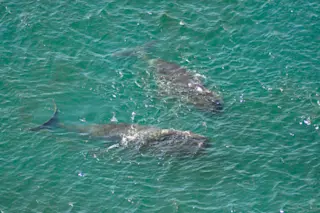On March 25, 11 tornadoes ripped through central Alabama. In a frantic attempt to survive, a family of six huddled in a tiny closet as the largest of the twisters — 1.3 miles wide and with winds shrieking at 150 miles per hour — shredded their home.
Strange as it might seem, these tornados, and an outbreak of more twisters just two days later, were linked to thunderstorms boiling up some 10,000 miles away, over the Indian Ocean. And it wasn't the only U.S. extreme weather event so far this year that was tied to things happening in the atmosphere many thousands of miles away.
Lest you think this is all somehow related to one iteration or another of the famous "butterfly effect" (for example, the question of whether the flap of a butterfly's wings in Brazil can set off a tornado in Texas), no, that's not really it.
Instead ...














